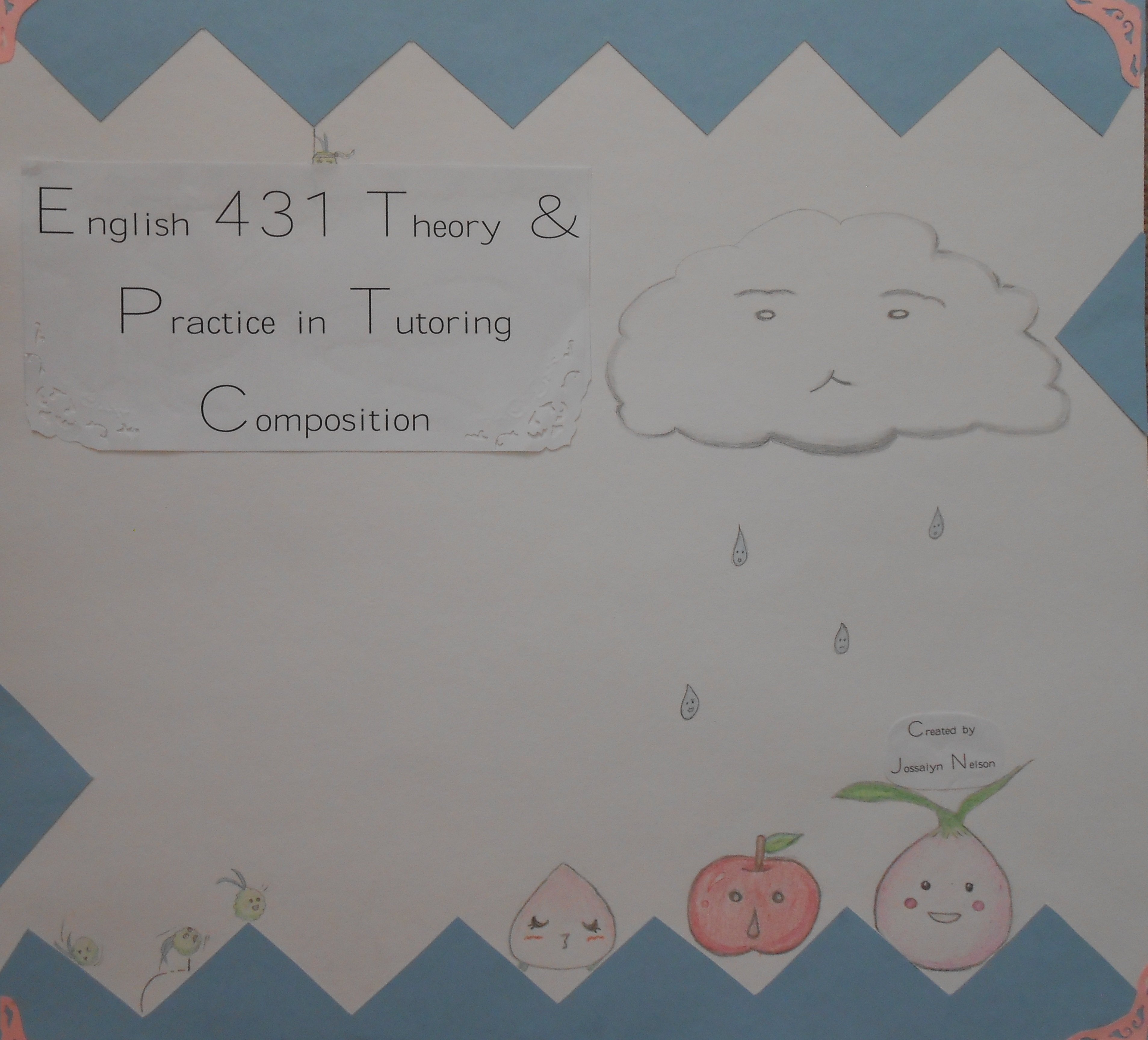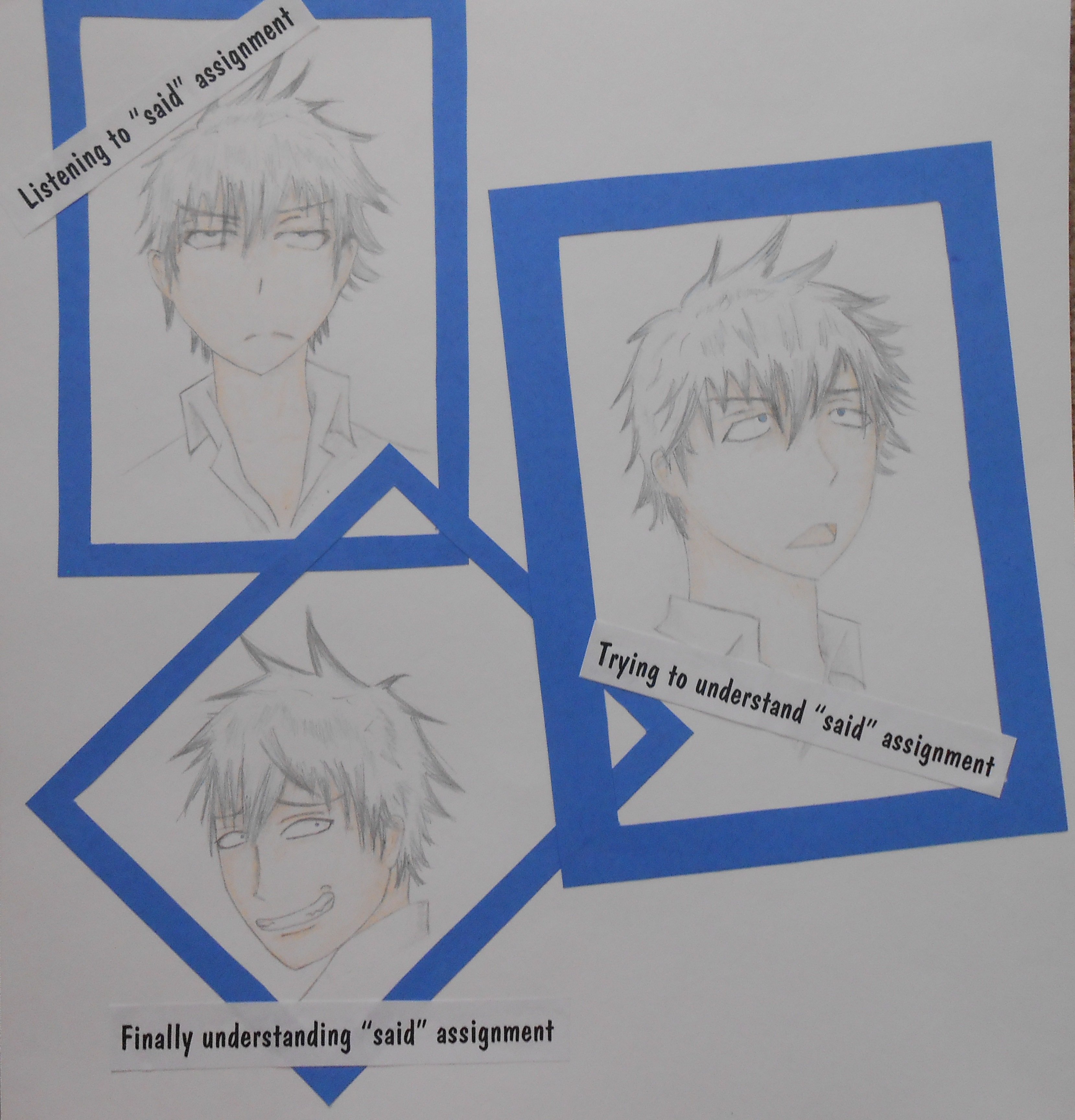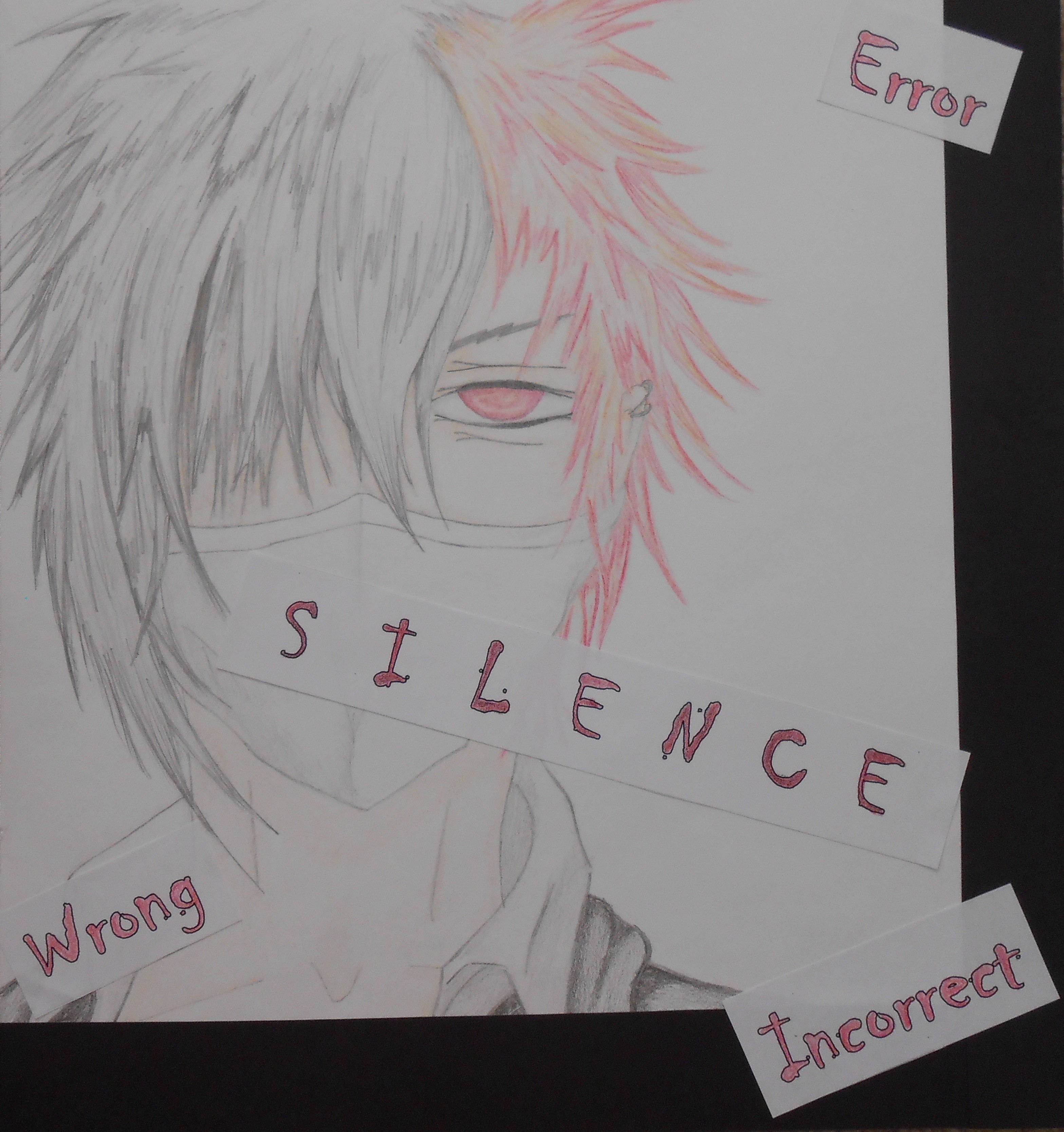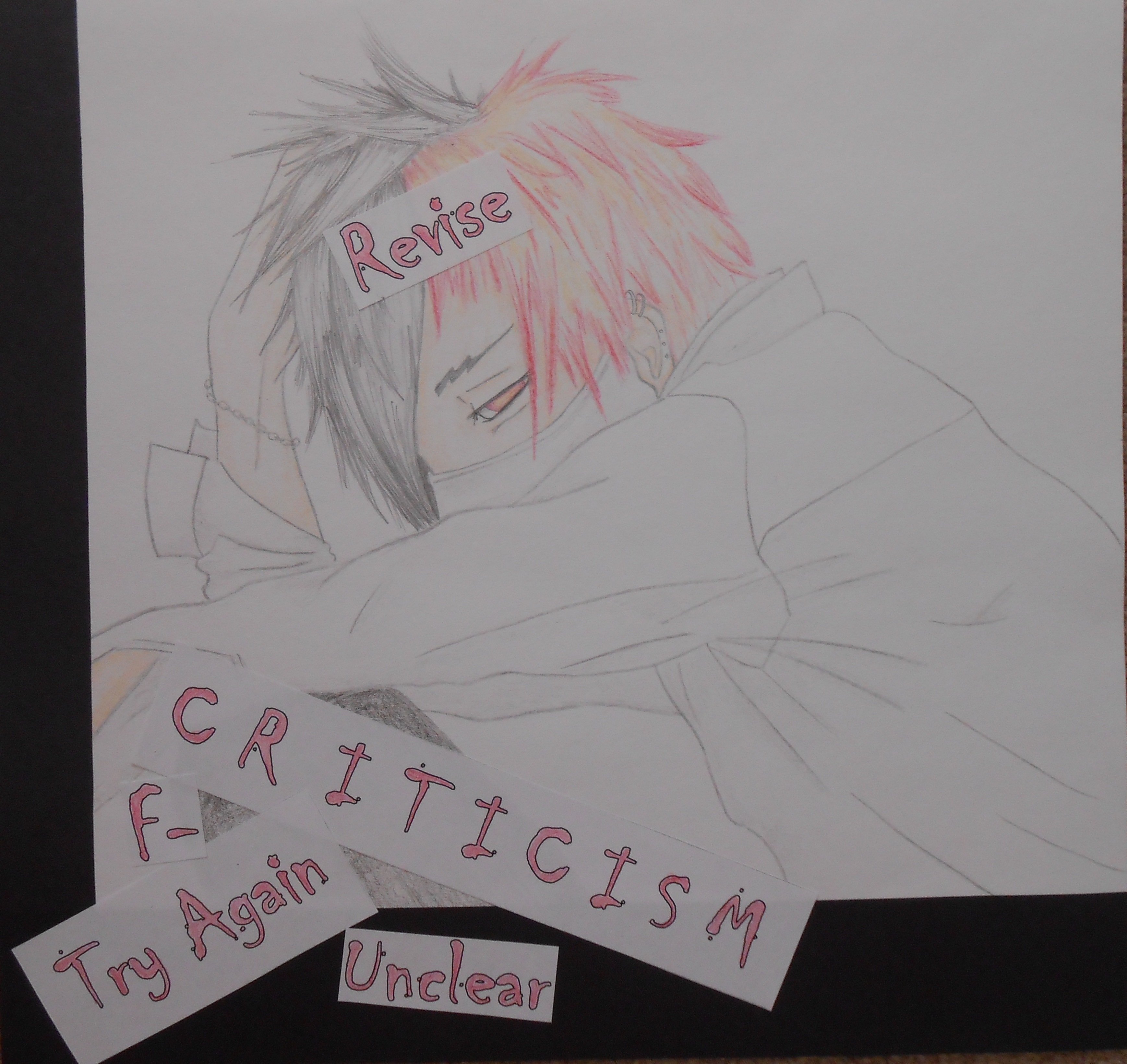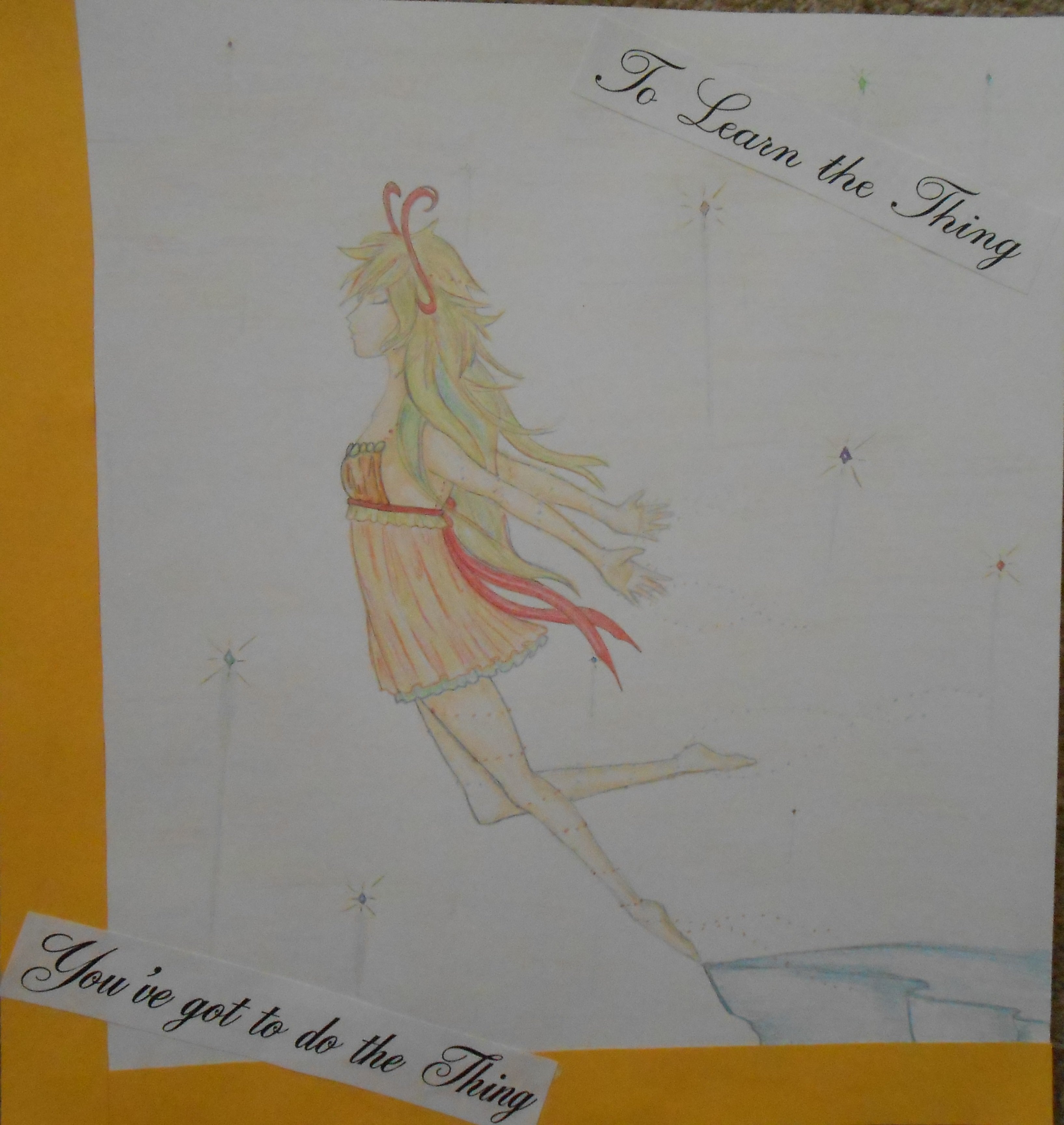
Multimodal and ESL
Last blog yea! I’ve done so many blogs this semester I am not sure I can discern which class is which anymore. So let’s talk about the multimodal project. So far I’ve discovered what my project is and I have already put my plan into action. I speak my best words through art and find a deep joy when drawing so that is what I’m going to do. I first selected the theme of how teachers criticize students work the wrong way. I can’t remember which reading this idea was from so if you have any clue please let me know! I’ve decided on three panels to express this idea and theme. Since the theme is so serious I wanted to provide a comedy panel as well, but I am still thinking of what I have learned in class that could be tied in with a comedy. So yes, two panels have been completed and I may do six or seven depending on my schedule. I am also debating on a way to display these panels that is easy to carry around campus because I always carry too much around. I may do a giant flip book that way the art is still preserved, but easy to handle.
So for my internship at the ESL center I have had a really great experience working there. I want to continue this job at the ESL center next fall, but I am not sure how to apply. I have contacted Sandra and she said they would send out applications, but so far I have received nothing. I went onto the CSU website to search for details and sure enough I have found nothing. That website is frustrating and has so many side links with useless information; I have missed so many opportunities in my first year here. Anyways… enough ranting, if you have any leads please let me know.
My list of things I want to remember while working in the ESL center for fall:
- Choose only a few writing habits to criticize that block the writers main points
- Criticize nicely while adding encouraging notes
- Remember students writing and speaking goals when going over their work
- Ask other tutors opinions if I am not sure on certain questions and rules
- Practice, practice, practice English speaking with students (the more exposure the more they learn)

Multimodal analysis Jossalyn Nelson
What is to be gained from multimodal texts?
The benefit of multimodal text is that the students are able to express their ideas and opinions through a medium that suits their style and their process of thinking. Ideas can be expressed in various forms reaching a broader audience to create a clear understanding of the subject being presented. Shipka states that “instructors frame their response to students’ work in increasing efficient, purposeful, and constructive ways by focusing on the specific goals and choices students have selected and shared with the instructor”. I believe multimodal texts also give students the chance to become engaged and interested in the lesson being taught. They are able to apply what they have learned from the lesson in a form that is easier for them to understand.
What are the complications?
The complications of a multimodal text is, if students are using multimodal to express a certain idea others may not understand what is being said. If students of a young age are given freedom to express their ideas and understanding of the topic through multimodal projects they may not know how to create these projects and become frustrated with their work or the result of their work. They may also not fully express their ideas or put time and effort into the project. It will be hard for the teacher to discern if the student put their full effort or if the project turned out poorly even though maximum effort was used in creating it (This has happened to me because I wasn’t used to having creative freedom in a classroom).
How do we support writers as they compose using a variety of modes?
As teachers we can help guide the student in the right direction; I think it is fine to insert our opinion and ideas into the student’s project if they are having a tough time in making decisions or in finding a place to start. They have the option to take our ideas or inspire from our thoughts. Once the students have been taught how to use multimodal projects, it will become easier for them to be creative in what they are trying to express and find which methods work best for them. We can also suggest places for them to gain inspiration for the projects by having them do brainstorming in class. For example, in our class when the students shared their ideas on the projects, even though there is only one student talking about their own project other students may realize ideas for their own project within this time frame.

My Interpretations of Wiley and Russell’s Works
The Schaffer method was rather baffling to me. I remember in school learning how to write an essay and I have never heard of this method before. I believe that it would be a great aid to use when first teaching children how to write, but should not be used for high school level and beyond. By high school the students should know how to write a strong essay without the use of Schaffer’s model in writing. By having this template in high school it can hinder a student’s writing because they will be concentrating on making sure that their writing set up is perfect and are less likely to focus on the materials they are writing about. Having this distraction can make the student very frustrated because perhaps they cannot think of having all the evidence as support or the comments in the correct order. Using Schaffer’s model when children are first learning how to write can help them understand essays do need a topic sentence and evidence to back up and support the topic sentence or the writers opinion. It should be stated clearly that the order of the system is not important when writing a strong paper but that the paragraph should be clear and concise with its ideas. As a teacher I would not use Schaffer’s method, but create one of my own. I would like to teach students that it is important to have a topic sentence so that the reader knows the importance of the essay or paragraph and to have sufficient evidence to support their ideas if necessary. We should focus less on the importance of sentence order and structure and pour our focus into the content and formulating opinions of our own. This is what it means to be a strong writer and to have confidence that our writing skills will grow with practice and observation of other writers. Students should continue to analyze various works questioning the statements and observing what makes the reading a convincing and great essay. With these concepts in mind the students should also strive to use the methods they find most successful or inspirational within their own writing.
The meditational tools established by David Russell that I have seen in the ESL center are that students have access to computer in order to print out their work so that when correcting mistakes it is more efficient and easier to write on. There are worksheets to use as reference with printed examples so that the ESL students can take this handout with them and use it when writing papers. There are books at the tutor and students disposal that can be used to look up information about writing practices. I would say the most useful tool and the tool that I use most often is my phone. When the student has a question I can usually find the answer on google when looking up a grammatical rule or how to pronounce a certain word. Russell also mentions tools called semiotic tools which consist of writing and speaking as well as gestures, music, physical position, etc. (5). The semiotic tools that I use the most is gesturing in order to describe what I am talking about and the use of association with familiar objects in order to make my examples more clear and concise when explaining a rule or idea.
There are several objectives within the ESL such as helping the student with their writing and speaking skills, making them feel welcome inside the building, and promoting the schools ESL center by setting a good example. The most prioritized objective is to meet the student’s needs within the allotted time and to accomplish their goals. Sometimes it is hard to reach the student’s goals because of the limitations of the tutor’s knowledge. Luckily there are several tutors within the facility who can almost always answer the questions. The participants interact rather casually and openly. Each tutor has their own method of teaching the ESL students from how they explain writing mistakes to reading the texts aloud. My preference is to have the ESL student read their work aloud so that they can practice their English as well as hear the mistakes in their writing. I encourage them to do this at home as well telling them that I practice this technique often and benefit from it all the time. After they are finished with reading the first paragraph aloud I will read it aloud then go sentence by sentence looking for errors in writing. By having the students participate with the tutor I believe it forms a bond and helps build a future relationship between the both people.
I have to agree with Russell’s Zone of Proximal Development. He states that writing and learning takes place as people use their tools and the people learn by participating in some type of activity system (7). If the ESL students did not have the tutors as an aid in learning it would make writing and speaking English very challenging. Just think, how is a person supposed to learn the correct usage of English if no one is there to tell them that their work is wrong or correct? By having the tutors there to encourage the students they can understand how their writing works and how the English language is used correctly in everyday life.

Diagnosed with LPP
So let’s start with defining legitimate peripheral participation (LPP). In my group we decided to create a drawing of an orchard. The orchard represents the many subjects, talents, skills, and knowledge that people learn throughout their life time. Each tree represents a subject at its basic form. Let’s say the tree represents “a person learning math” within this tree are apples which are subjects that relate to math such as geometry, statistics, basic math, everyday math, etc… As each person/tree grows, growth represents learning; they collect more and more apples of knowledge. The tree roots represent the connections between subjects and other trees of knowledge. For example the roots of math can branch out to reach a tree that represents fashion designing. Fashion designing requires a specific type of math and so the student has knowledge that connects to this other tree. The sun would represent the encouragement of growth for all the trees of knowledge. The sun represents peers, teachers, family, independent learning, and people within the person’s environment such as at work, in school, etc. This basic ecological system demonstrates that people learn by what is in their surroundings and are able to learn different forms within one subject matter. This is how I believe that legitimate peripheral participation is defined, but it should never be limited to this definition.
I want to circle back to the quote I was discussing from Wednesday. I don’t think I explained my thoughts clearly in class so I would like to take the time to further clarify my ideas. The quote states, “We should emphasize, therefore, that legitimate peripheral participation is not itself an educational form, much less a pedagogical strategy or a teaching technique. It is an analytical viewpoint on learning, a way of understanding learning” (40). By stating this quote I believe that Lave and Wenger are explaining that the way we learn should not be limited by forms of education that are provided in the same manner for everyone. Each person has their own system of learning that works for them so it cannot be written into our educational teachings as a uniform way of how things are taught. They believed that LPP was defined as understanding and observing how people learn in different environments and that these forms of learning are constantly changing and adapting to the environments that they are presented in.
For my first week in the ESL center I learned a lot from observing. The first thing I noticed is that the tutor established a relationship with the student before beginning to approach the student’s assignment. He did this by establishing connections by asking questions about the student hometown, their goals when living in America, and what differences did they find interesting about both countries. By establishing this relationship it helps the student relax and allows them to have confidence to ask questions later on. Honestly, I don’t like the ESL environment I found it a bit stiff and unwelcoming. This may be because I am used to the center at Butte which has more natural lighting and larger spaces while Chico State is more closed off with uncomfortable chairs. This will not affect the established students who come in for help, but it will affect future students who are hesitant to come inside making them feel uneasy and more nervous. Nothing makes a student more nervous than opening a solid door with a feeling of uneasiness about what is on the other side. For the ESL’s resources the students have access to a printer and computer to print out their materials and there are several reference sheets and books they are allowed to use while at the center. I believe that space and materials affect the center by either creating an environment that is comfortable and welcoming or just the opposite. The ESL center could use some rearranging and upgrade in furniture to make it more welcoming and busy. Upon entering I noticed the ESL student seemed resistant to come into the building because it was hidden and closed off, but once he was inside and settled in the tutoring went smoothly. It is difficult to work with limited resources, but I believe the students are doing the best with what they have been provided with.
For class I would like to explore some ideas of how we can best use the ideas of LPP and incorporate them into our teaching methods and curriculum.
